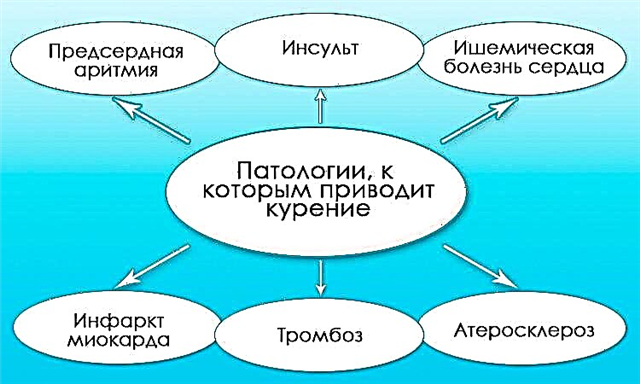Tympanostomy (ear bypass surgery) is a simple otolaryngological operation in which a thin cylindrical tube (shunt) is inserted into a hole in the ear membrane. The insertion of tympanostomy tubes helps drain and aerate the middle ear cavity, thereby removing accumulated exudate from it and restoring normal pressure.
Surgical manipulations are performed on an outpatient basis under anesthesia and microscope control. During surgery, a microscopic incision is made in the tympanic membrane (myringotomy), after which a temporary or permanent shunt (tympanostomy) is inserted into it. The surgical procedure is prescribed for patients of any age due to its painlessness and low risk of complications.
About anatomy

The eardrum is a thin membrane that sits between the middle ear cavity and the outer ear canal. It acts as a barrier that prevents moisture and pathogens from entering the mucous membrane of the tympanic cavity. With the development of inflammatory processes in the ENT organs, the inner diameter in the Eustachian tube narrows, which leads to a violation of its aeration function. As a result, negative pressure develops in the tympanic cavity over time, which becomes the main reason for the accumulation of serous or purulent exudate in it.
Timely shunting of the tympanic cavity helps to equalize the external and internal pressure, as well as the outflow of fluid from the ear.
This leads to drainage of the middle ear, regression of inflammation and normalization of the drainage and aeration function of the Eustachian tube. The installation of a microscopic tube contributes to the relief of local manifestations of ear pathology and a speedy recovery.
Indications
Tympanostomy is one of the most common operations performed to treat ear problems. The need for surgical manipulations arises only with impaired drainage and aeration of the tympanic cavity. In most cases, this is due to swelling of the mucous membrane of the Eustachian tube, which connects the nasopharynx and the middle ear.
Typically, eardrum shunting is performed in the following cases:
- exudative otitis media;
- barotrauma;
- purulent inflammation;
 chronic otitis media;
chronic otitis media;- sensorineural hearing loss;
- abnormal structure of the Eustachian tube.
Often, the procedure is carried out on the eve of a flight in an airplane to prevent barotrauma. A sudden change in pressure on the ear membrane can stretch and rupture. Violation of the integrity of the membrane leads to a sharp decrease in hearing and an increased risk of developing pathogenic flora in the mucous membranes of the middle and inner ear.
Bypass surgery can be performed for intratympanic administration of drugs into the middle ear cavity, which provides a rapid regression of catarrhal processes.
Types of shunts
Eardrum shunt - what is it? The shunt is a very thin, cylindrical tube that is inserted into a microscopic incision in the ear membrane. Tympanostomy tubes are made primarily of metal, plastic, or polytetrafluoroethylene (Teflon).
For surgical purposes, two fundamentally different types of shunts can be used:
- smooth - short, small shunts that are used to temporarily drain the ear cavity. After shunting, the tubes fall out on their own within 6-12 months. As the eardrum heals, the eardrum literally pushes the shunt into the external auditory canal;
- with flange - long-term shunts that are installed for several years. They have a large diameter and special sides (flanges), with the help of which they are securely fixed in the ear membrane and do not fall out.
During tympanostomy, a microscopic tube is inserted into an incision, which is made along the conditional axis, which is a continuation of the handle of the auditory ossicle (malleus).
The shunt in the ear acts as an inflamed Eustachian tube: it drains and ventilates the ear cavity, which contributes to the speedy tissue regeneration.
Tympanostomy in children
Usually, ear bypass surgery is performed in children between the ages of 1 and 3 years. This is due to the anatomical structural features of the organ of hearing, in particular the Eustachian tube. According to statistics, children are 3 times more likely to suffer from otitis media and other ear pathologies than adults. It is for this reason that they much more often need to normalize the outflow of fluid from the ear cavity and restore normal pressure on the membrane.
Young children are operated on under general anesthesia, which makes it possible to fix the head without problems for inserting a shunt into the ear membrane. In the acute course of purulent or exudative otitis media, specialists limit themselves to paracentesis, i.e. incision of the membrane. Thus, it is possible to facilitate a one-time emptying of the ear cavity, but this procedure is completely irrelevant in the treatment of chronic diseases. The incision is very quickly tightened and in case of further accumulation of fluid in the middle ear, the inflammatory processes do not regress.
Important! In the presence of adenoids, shunting is often performed together with adenomy, which helps to reduce the risk of recurrent development of purulent otitis media.
Tympanic membrane bypass surgery in children is most often performed using temporary tympanostomy tubes. They are small in diameter, but contribute to proper drainage and ventilation of the middle ear. If necessary, antibacterial drops can be instilled into the sore ear, accelerating the healing process of the mucous membrane.
Tympanostomy in adults
Surgical treatment of otitis media is required only in the presence of abnormalities in the structure of the auditory canals and chronic inflammation of the middle ear. Ear bypass surgery in adults is performed under local anesthesia. In During the operative manipulations, the specialist makes a hole in the ear membrane using a microscopic knife. If the opening is left without a shunt, it will heal over several days, causing fluid to re-accumulate in the middle ear.
During the operative manipulations, the specialist makes a hole in the ear membrane using a microscopic knife. If the opening is left without a shunt, it will heal over several days, causing fluid to re-accumulate in the middle ear.
The purulent masses are removed from the ear during aspiration, after which a tympanostomy tube is inserted into a small opening. To accelerate the regression of inflammatory processes, drops of decongestant and antiphlogistic action can be instilled into the shunts in the ears. However, it should be noted that only an otolaryngologist should be involved in the selection of the drug. Self-medication often causes irritation and allergic reactions, as a result of which the swelling of the mucous membranes of the ENT organs only increases.
Rehabilitation period
The entire operation takes no more than 20-30 minutes, therefore, after installing the drainage tubes, the patient is released immediately after recovering from anesthesia. Microscopic incisions in the ear membrane do not cause pain, therefore, during rehabilitation, patients do not need to take analgesics. In rare cases, patients experience dizziness and nausea, which is caused by a sharp restoration of pressure in the ear and the use of anesthesia.
Immediately after tympanostomy, patients' hearing is exacerbated, which is associated with the restoration of the sound-conducting function of the auditory ossicles. To avoid complications, experts recommend covering the external auditory canal with a cotton swab while bathing.Thus, it is possible to prevent the penetration of moisture and opportunistic microorganisms into the tympanic cavity, which is fraught with the development of purulent processes.
Complications
What are the consequences of ear bypass surgery in children? In 95% of cases, after surgical treatment, patients notice an improvement in their well-being: the patency of the Eustachian tube is restored and the swelling of the mucous membrane in the ear cavity is eliminated. Postoperative complications are rare, but not an exception. In preschool children, fluid leaking from the ear often accumulates in the external auditory canal, which leads to the formation of crusts, narrowing of the canal and, consequently, hearing impairment.
Important! If, after tympanostomy, the ear membrane heals for a long time, this may indicate the occurrence of inflammatory processes in it.
The consequences of ear bypass surgery can include:
- perforations - perforations in the ear membrane, which in rare cases do not tighten after the shunt is removed. To close the hole, surgeons resort to tympanoplasty;
- scarring - the appearance of adhesions on the surface of the tympanic membrane, resulting from its inflammation or the re-development of purulent otitis media;
- infections - viral and bacterial ENT diseases resulting from the penetration of pathogens into the tympanic cavity through a tympanostomy tube or moisture that has entered the ear;
- premature tube prolapse - loss of the shunt from the tympanic membrane, caused by its damage and rapid regeneration of the tissues of the ear membrane.
In most cases, shunting proceeds without complications, but moisture ingress can provoke repeated inflammation of the mucous membranes and recurrence of otitis media. To prevent complications, experts recommend closing the auditory canal with a cotton swab during water procedures.

 chronic otitis media;
chronic otitis media;

